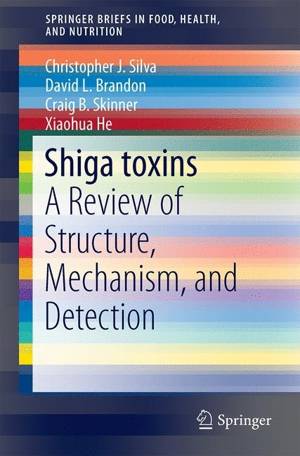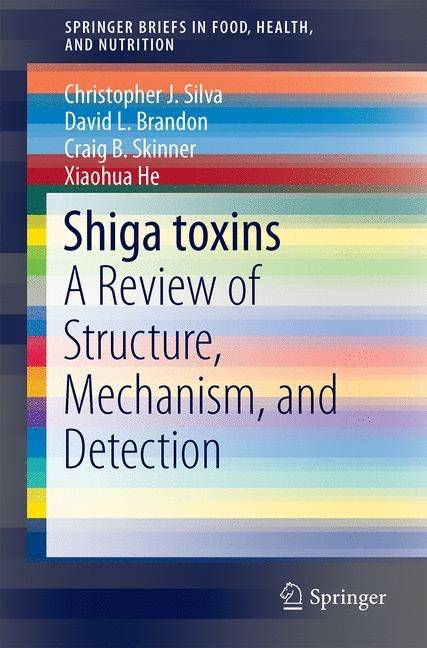
- Afhalen na 1 uur in een winkel met voorraad
- Gratis thuislevering in België vanaf € 30
- Ruim aanbod met 7 miljoen producten
- Afhalen na 1 uur in een winkel met voorraad
- Gratis thuislevering in België vanaf € 30
- Ruim aanbod met 7 miljoen producten
Shiga toxins
A Review of Structure, Mechanism, and Detection
Christopher J. Silva, David L. Brandon, Craig B. Skinner, Xiaohua He
€ 52,95
+ 105 punten
Omschrijving
This Brief provides an in-depth overview of Shiga toxin producing E. coli, covering key areas such as recent Shiga toxin related poisonings in Europe and the US, the structure and mechanism of action of Shiga toxin, and current methods of detection.
The globalization of food production has introduced new risk factors and intensified existing hazards, complicating issues of food safety. Foodborne illness outbreaks, such as those related to Shiga toxin producing E. coli (STEC), are becoming more common and more dangerous. The frequent occurrence as well as the severity of Shiga toxin-provoked disease, and the threat these bacterial toxins pose to the food supply, is a primary concern in food safety.
This review serves as a key resource for scientists in the field and public health and regulatory officials charged with maintaining food safety. The Brief also looks to the future of Shiga toxin treatment, specifically the translation of lab bench science into clinical treatments for STEC disease.
The globalization of food production has introduced new risk factors and intensified existing hazards, complicating issues of food safety. Foodborne illness outbreaks, such as those related to Shiga toxin producing E. coli (STEC), are becoming more common and more dangerous. The frequent occurrence as well as the severity of Shiga toxin-provoked disease, and the threat these bacterial toxins pose to the food supply, is a primary concern in food safety.
This review serves as a key resource for scientists in the field and public health and regulatory officials charged with maintaining food safety. The Brief also looks to the future of Shiga toxin treatment, specifically the translation of lab bench science into clinical treatments for STEC disease.
Specificaties
Betrokkenen
- Auteur(s):
- Uitgeverij:
Inhoud
- Aantal bladzijden:
- 169
- Taal:
- Engels
- Reeks:
Eigenschappen
- Productcode (EAN):
- 9783319487151
- Uitvoering:
- Paperback
- Afmetingen:
- 155 mm x 235 mm

Alleen bij Standaard Boekhandel
+ 105 punten op je klantenkaart van Standaard Boekhandel
Beoordelingen
We publiceren alleen reviews die voldoen aan de voorwaarden voor reviews. Bekijk onze voorwaarden voor reviews.








